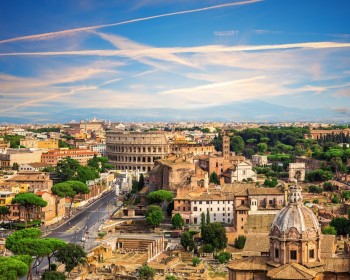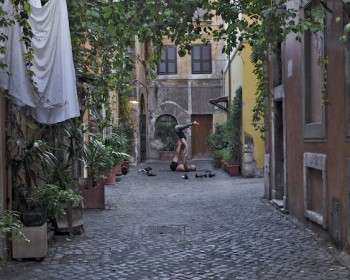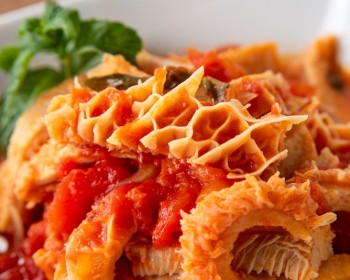In this article, we will explore the most renowned gathering places of Roman nights and the dishes from local cuisine that have over time gained recognition and spread not only throughout the Eternal City but also globally.
Campo de’ Fiori
Among the symbolic squares of Rome, serving as a hub for both young Romans and tourists, is Campo de’ Fiori. A bustling fruit and vegetable market by day, it magically transforms into a lively gathering spot as evening descends. The square is surrounded by bars, bakeries and restaurants offering a wide and varied selection. At Campo de’ Fiori, one can enjoy a quick snack with freshly baked Roman-style pizza bianca, have dinner with classic dishes like the timeless carbonara or the flavorful cacio e pepe, or opt for an informal sunset aperitif, sipping a beer or sharing post-dinner moments with friends under the shadow of the square's symbol, the statue of Giordano Bruno.
Trastevere
On the opposite side of the Tiber River, just a few meters away, lies Trastevere — the quintessential Roman nightlife district. Connected to Campo de’ Fiori by the renowned Ponte Sisto, linking via del Pettinari and Piazza Trilussa, Trastevere, with its squares and alleyways, comes to life on the streets. Nightlife here thrives outside the numerous establishments in the area. Trastevere is alive practically all day but becomes even more captivating from sunset onwards. Osterias and trattorias offer a taste of traditional Roman cuisine. From Amatriciana, Gricia, and meatballs in sauce to tripe, rolled specialties, fried artichokes, supplì, and pizza — the gastronomic offerings are truly endless in the Trastevere district. An authentic experience, especially for tourists seeking to breathe in the genuine atmosphere of Roman life, both past and present.
Piazza Navona
Crossing one of the bridges that connect the two sides of the city center, you arrive at another historically significant square. Known worldwide for its magnificent Baroque architecture, obelisk, and splendid fountains, Piazza Navona was once called the Stadium of Domitian by the Romans. Until the 5th century, it was a venue for shows and athletic competitions. Today, Piazza Navona has been rejuvenated over the centuries and is ready to welcome tourists and locals alike with numerous cafes and restaurants. In this "open-air parlor," you can take a small break between visits, have lunch or dinner at any time of the day or night, entertained by street artists populating the square from early morning. Even in the streets surrounding the square, you can breathe in the atmosphere of Roman nightlife. Especially during the summer, strolling through the narrow lanes while savoring another classic of Italian and Roman tradition—the artisanal gelato—is an experience to be cherished.
Conclusion
Whether you find yourself in the Eternal City for business or pleasure, experiencing Roman nightlife in one of the city's most characteristic hangouts is an essential part of your stay. As the evening lights emerge, after a long day exploring museums and monuments, there's nothing better than being enveloped by the magical atmosphere of the Capitol, savoring the delights of Roman culinary tradition, whether seated at a trattoria table or strolling through the alleys of the city center.












